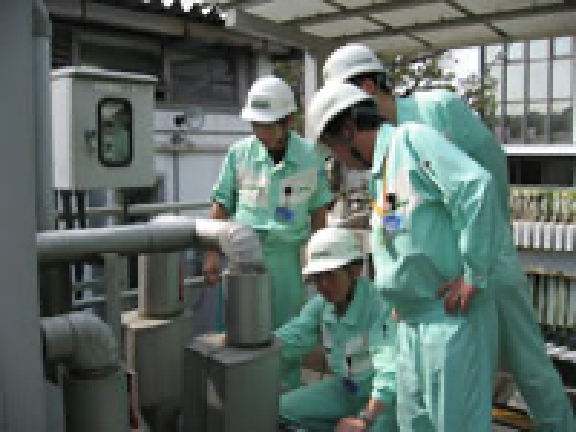Environmental Risk Management
Environmental accidents can cause serious environmental pollution. For this reason, it is imperative to prevent the materialization of this risk and introduce operational guidelines to minimize damage in the event of an environmental accident. The Ushio Group views addressing environmental risk as an important social responsibility, and the Group works together to implement environmental risk management measures.
Environmental Risk Management
Ushio manages environmental risks by establishing various rules so that it can identify and respond appropriately to various risks.
Environmental accidents can cause serious environmental pollution. For this reason, it is imperative to prevent the materialization of this risk and introduce operational guidelines to minimize damage in the event of an environmental accident.
The Ushio Group, viewing its response to environmental risk as an important social responsibility, works together to implement environmental risk management measures.
For example, in the process of understanding, assessing, and identifying environmental risks, we inspect hazardous chemical depots and pollution prevention facilities at each Group company and division, create an environmental hazard map, conduct environmental risk assessments, and mitigate risks using the PDCA cycle.
Specific Activities
The division risk management rules stipulate the flow from risk evaluation to response at divisions in order to reduce business risk. By comprehensively evaluating the equipment at each division based on the probability of problem occurrence and the degree of impact if it occurs, and mapping this information, the risks of each equipment can be understood at a glance. We make decisions on inspections, repairs, and updates according to urgency so that risks can be reduced.
Risk mapping examples of divisions (red area indicates high risk)
Creating Hazard Maps and Conducting Environmental Risk Investigations
Ushio has created hazard maps for its divisions, excluding offices, thereby clarifying the locations where there are risks of accidents or disasters occurring. Once created, we regularly review these hazard maps.
In addition, we use hazard maps to conduct environmental risk inspections at least once a year, and to check the status of pharmaceuticals storage management, the maintenance and operational status of facilities and equipment, and such.


